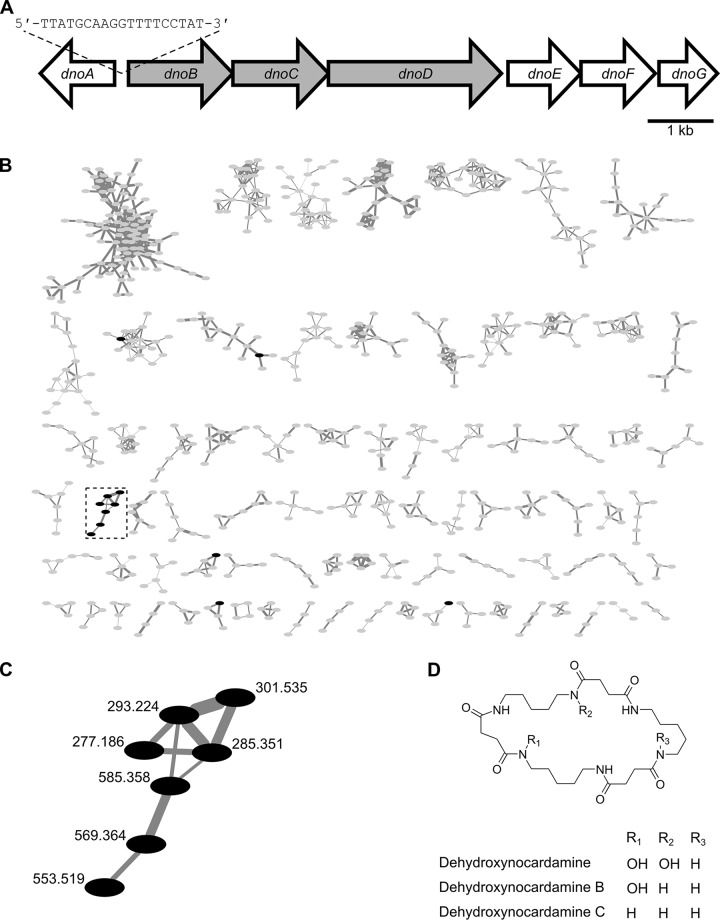FIG 4.
Corynebacterium propinquum produces the siderophore dehydroxynocardamine. (A) The dehydroxynocardamine BGC from C. propinquum. ORFs encoding biosynthetic and transport-related functions are filled with gray and white, respectively. See Table 1 for specific ORF annotation. The DtxR sequence motif is shown upstream of dnoB. (B) Subset of the molecular network of C. propinquum HSID18034 and C. genitalium HSID17239 agar core extracts. Gray nodes are metabolites shared by both strains, and black nodes are metabolites unique to C. propinquum. There were no detected metabolites that were unique to C. genitalium. The edges are weighted to the cosine score between the two features. A single cluster unique to C. propinquum is outlined in a dashed box. See Fig. S2 in the supplemental material for the full molecular network. (C) Zoomed-in view of the single cluster unique to C. propinquum with the nodes labeled by their corresponding m/z. This cluster contains single- and double-charged states of dehydroxynocardamine, dehydroxynocardamine B, and dehydroxynocardamine C. (D) Structures of dehydroxynocardamine, dehydroxynocardamine B, and dehydroxynocardamine C.

